The Division 2 Review
Grinding towards Greatness
It has been three years since Ubisoft entered the now crowded arena of action RPG-shooter hybrids with their slightly bizarre but rather compelling blend of realistic setting and RPG infused systems in The Division. Since that time, the team at Ubisoft Massive have not been idle, as they continued to refine and work on this game while also developing a full-blown sequel that purports to incorporate fan feedback while retaining what made it so enjoyable. In many important ways, the team has succeeded, as several weak areas have been greatly improved in The Division 2, while the core of what made it such a promising first entry in the IP remains intact. However, there are still some wrinkles that are worth knowing about before taking the plunge into Washington D.C.
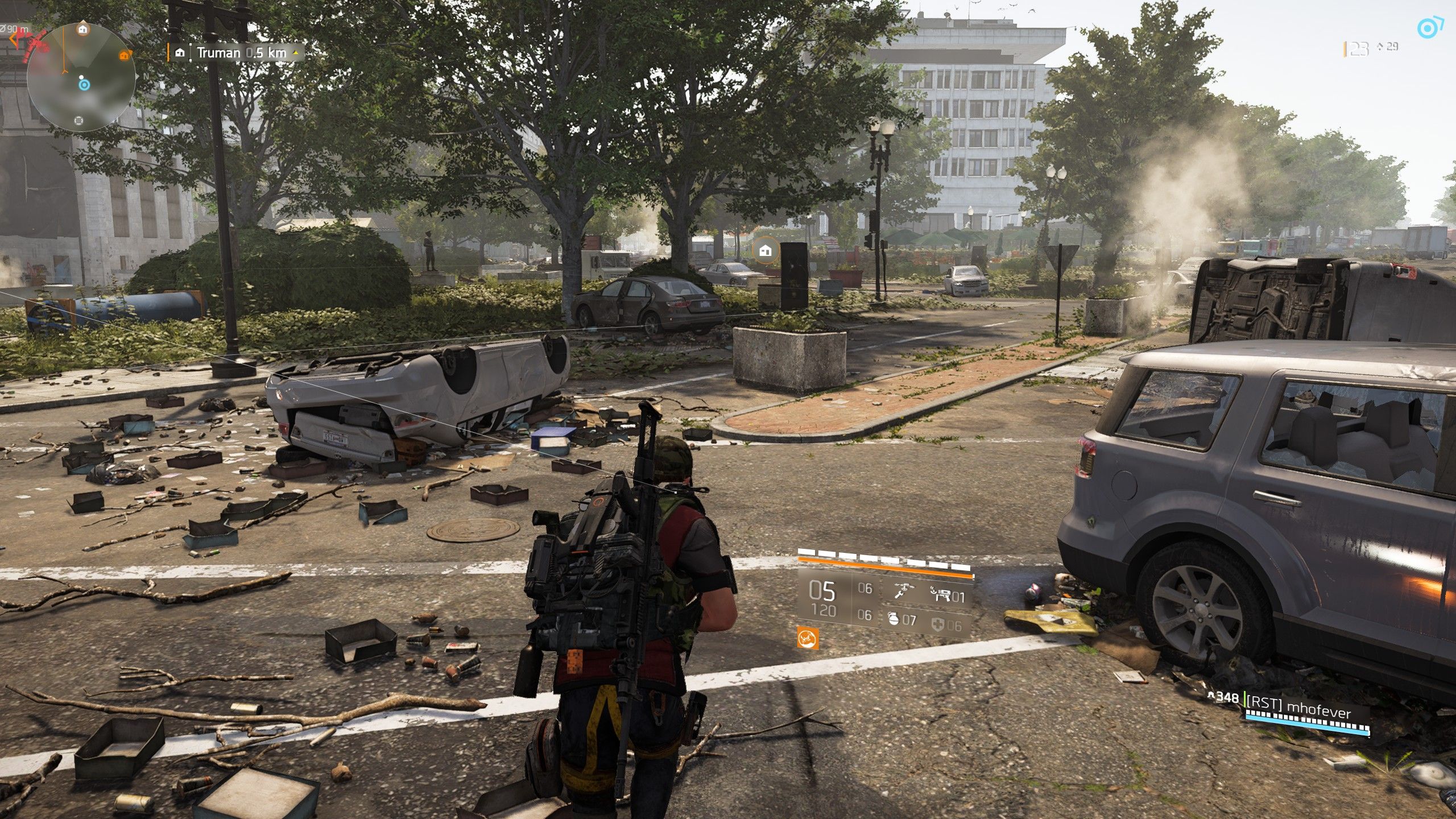
If there was one thing that can be pointed to that made the original Division stand out from its peers, it was the setting. At the time, the game’s Christmas-themed open world New York was one of the most densely detailed and atmospheric urban environments ever crafted, to the point where it seemed like topping it might be impossible. The sequel moves to Washington D.C. with the spread of the virus, and though I didn’t end up liking the new location quite as much as New York, the follow-up is still extremely impressive. Though the sequel takes place less than a year after the events of The Division, nature has begun to reclaim the city, with vegetation creeping in and wildlife wandering the streets. Once again, the map is relatively small by modern open world game standards, but easily makes up for it with astonishing levels of detail and an incredible density of things worth doing and locations worth exploring.
Unfortunately, the story that supports the change in setting is underwhelming. The virus that brought New York to its knees has spread, and ultimately causes the shutdown of the central Division network in Washington, prompting a distress signal that brings yourself and other agents to the city. Once there, you are once again tasked with retaking the city from local violent factions and helping the local task force establish and improve settlements. The story is extremely bland and poorly told with absolutely no memorable characters or interesting twists. Dialogue delivered in cutscenes ranges from generic at best to eye roll-inducing at worst, and you will frequently ask yourself why or what exactly you are doing. You can blur your eyes a bit and buy into the vague premise of helping re-build civilization in Washington, supported by the fact that settlements do visually change as you upgrade them, and friendly soldiers will start to patrol the streets, but in general the story side of The Division 2 feels like a wasted opportunity.
Thankfully, the story remains in the background, acting as a bare minimum premise to support the shooting of men and picking up of countless color-coded items. The Division 2 is a mostly iterative sequel, working off of the foundation laid out by its predecessor, tweaking and enhancing ideas rather than reworking them entirely. The city is once again divided into regions, with each region having a range of enemy levels associated with them, and a safe house you can unlock. From there, you can head out and take on story missions, side missions, or various open world activities. Most of your time will be spent engaged in shootouts with enemies, poking around for things to pick up that might be useful, and fiddling around in your inventory.
In broad strokes, and especially early on in the game, The Division 2 will feel very familiar to anyone who spent time with the original game. However, the particulars of many systems have been tweaked, and almost all for the better. One of the first things you will probably notice is that groups of friendly and enemy soldiers no longer just stand around in the street. Instead, they will move around, patrolling, scavenging for resources and fighting one another when their paths intersect. This is tied to a network of control points and resource scavenging locations; you can help friendly troops take over control points from enemy factions, from which friendly patrols and resource-gathering expeditions are launched. If you capture all control points in a sector, it will be considered ‘liberated’ and under the friendly control. The more elaborate routines of both friendly and enemy AI helps make the world feel more alive, especially in the end-game, but more on that later.
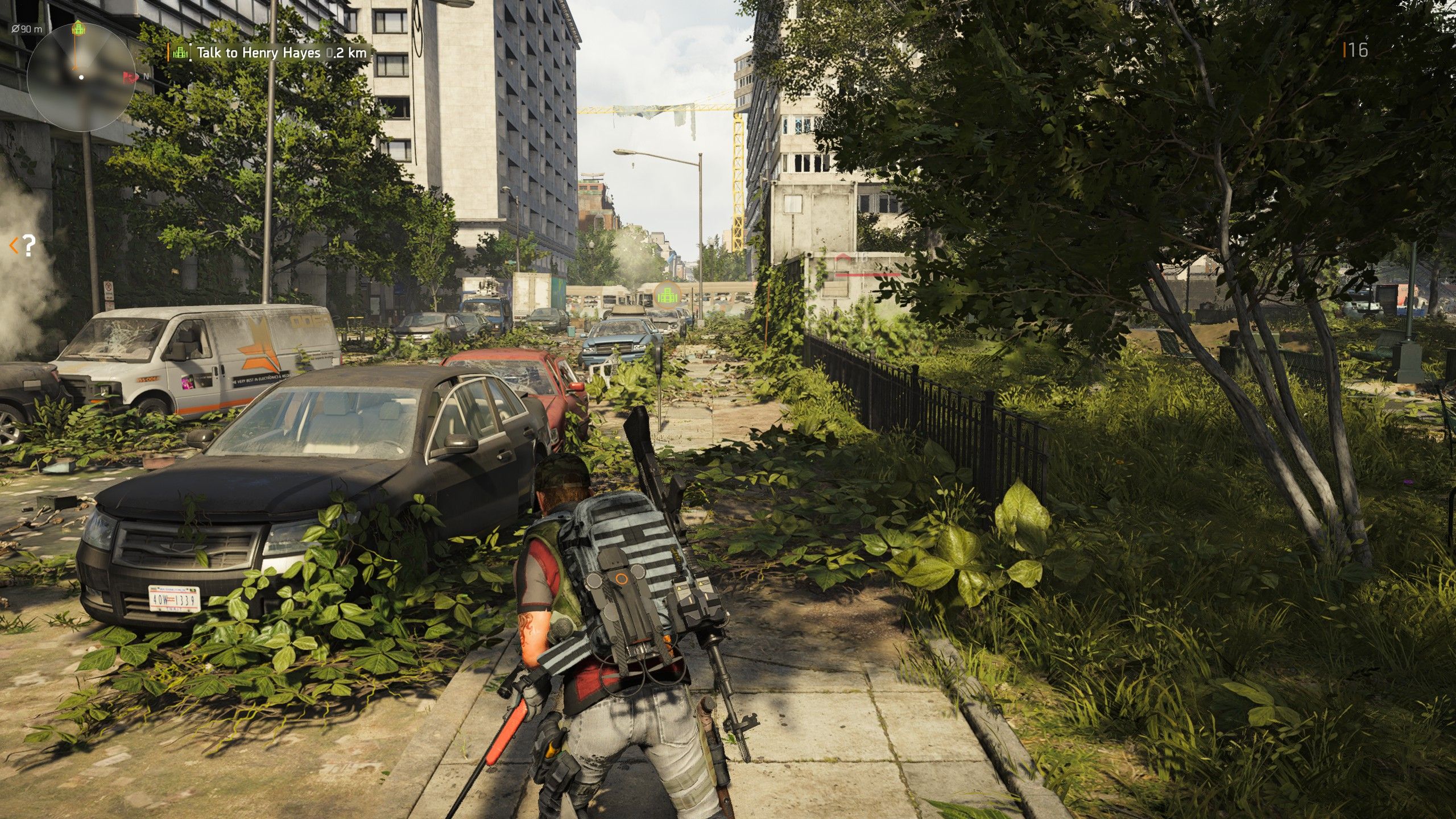
While the original Division forced you to complete repetitive open world activities to progress your character, thankfully this is no longer the case in the sequel. You will need to travel to and unlock settlements and go through a series of main missions, but beyond that, you can pick and choose how you spend your time to gain experience, level up and build your character. One significant area of improvement is side missions. There are a huge number of side missions, and their quality has been brought up to a main-mission level, each with unique locations and objectives. These continue to scale with your character all the way through the end-game, making them an excellent way to gain experience and gear. You will even find side missions out in the world by exploring instead of learning about all of them at a safe house, meaning there are some really good incentives just to wander around the open world – that's in addition to collectibles like cell phones (audio logs) and echoes that return from the first Division.
Other open world activities are a bit less interesting, such as stopping public executions and enemy radio broadcasts. You’ll need to do a few of these if you want to complete special projects that can lead to further side missions or unlock blueprints for crafting, but in general you aren’t forced to engage with any side activities you don’t enjoy. One thing you will need to do is seek out caches of SHD tech, which are hidden around the map and are required for unlocking skill variants and perks.
Special skills such as deployable turrets or health-boosting gadgets were a big part of what made the combat model in the original Division interesting, and this aspect returns in the sequel with significantly expanded options. Some skills return, such as the aforementioned turret and homing mines, but there are a lot of new ones to play around with as well. The personal drone might be the most useful; different variations of the drone will either fly around shooting at enemies, repair your armor, or even serve as a mini-bomber. The hive skill on the other hand can be deployed to send an army of minirockets to swarm nearby enemies, while the chem launcher lets you blast mobile foes with a sticky goo that prevents them from moving for a short time. There are eight major skills, with each skill having three or four variations, which adds a lot of depth and flexibility to the combat. You can have two skills equipped at a time, and they enter a cooldown after use. There is no longer a third super-skill.
Aside from finding two skills that you think are most useful to your playstyle, character progression comes primarily from finding and equipping better gear. The Division 2 is extremely generous in doling out randomised color-coded gear in the form of weapons and armor, to the point that the rarity tiers start to lose meaning as the rarest items eventually become commonplace. Though the loot is still bound by realism, there are a lot of unique weapons and attachments to mess around with. Each piece of gear will have stats that you will need to stare at and compare with existing items to determine what works best, which is mostly made easy despite the sometimes unwieldy menus. Typically gear will have bonuses for damage, defense or skills stat. Currently skill-boosting items don’t seem to work properly, as the only reason to increase your skill stat is to allow adding mods to your skills, but the required skill power for even the lowest-level mods is so high that they become impractical as you will need to sacrifice significant bonuses to damage and durability for mods that don’t make that much of a difference.
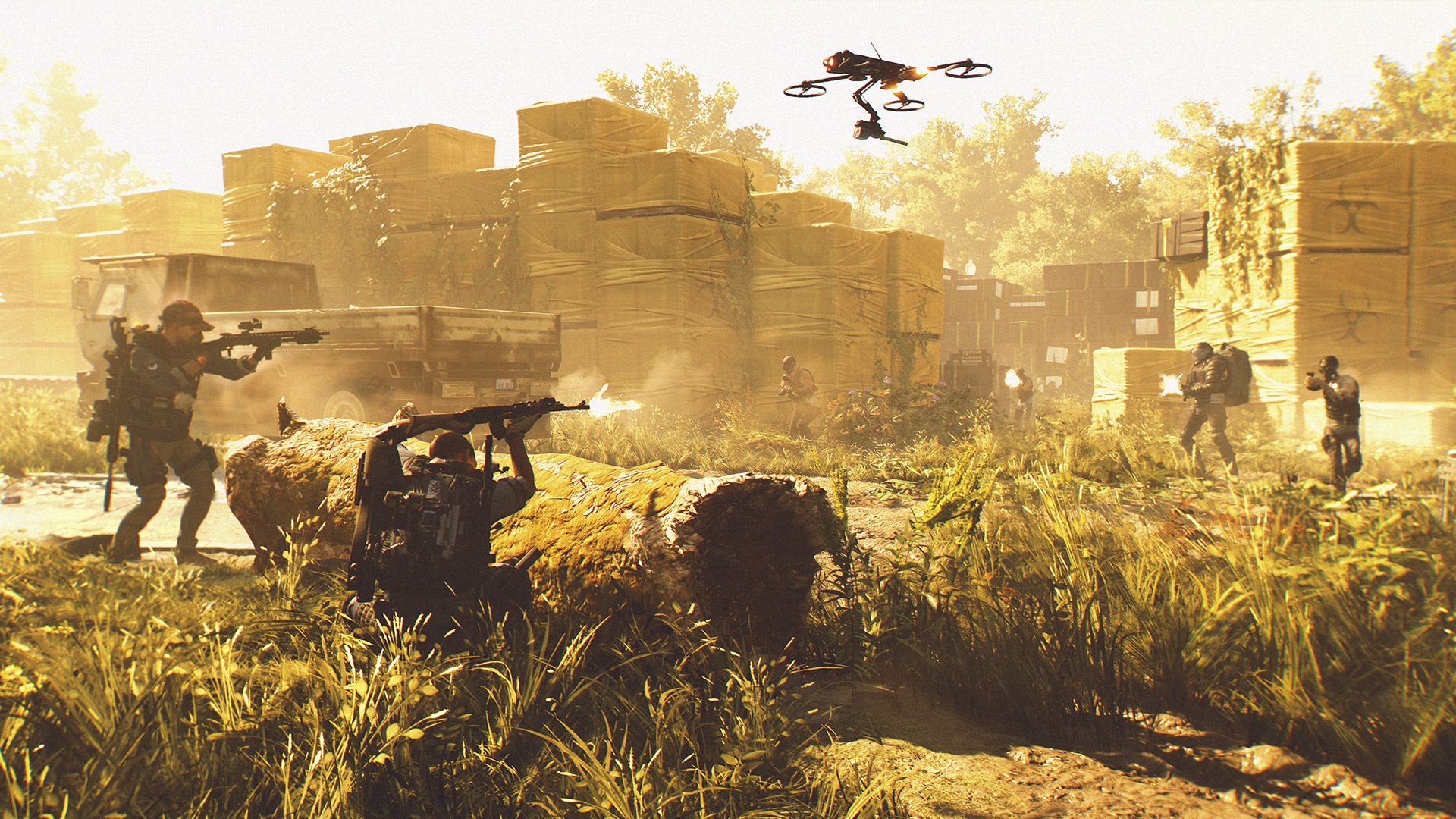
With a move to summer, you might have expected a bit more variety of cosmetic customization items. Though the character creator has been improved, microtransactions and loot-crates have crept into the cosmetic side of the Division 2’s loot, and though you will still find pieces of clothing and accessories out in the world, they are drastically scarcer than in the first game. You can earn cosmetic loot crates by playing, but it takes a while and each crate contains only a single random item of loot. In over forty hours with the game, I only had a handful of mostly unexciting clothing items for each category, with only a single stupid looking pair of ladies sunglasses in the glasses category, meaning I could never look as cool as I hoped. This system was likely implemented as a trade-off for all DLC in the game’s first year coming for free, but the excessive stinginess with cosmetic items is still an unfortunate regression.
Another significant change is how armor works both for yourself and for enemies. Your health bar is now divided into two sections; your armor and your core health. Enemies must break through your armor in order to damage your core health bar. Your health slowly recharges, but your armor does not, meaning you must rely on armor repair kits or armor repairing skills. This armor and health separation also applies to enemies; you must break through an enemies’ armor before you can take them down. For tougher enemies, you will actually see pieces of armor break off, exposing weak points that you need to hit to damage their health. Though you will still need to pour a lot of bullets into some enemies, the new armor system makes the combat more satisfying and helps reduce the bullet-spongey feeling the first game suffered from; though there will still be moments where you blast an enemy’s bald head with a high powered rifle and they will fight on as if they didn’t even notice.
The combat in general is more exciting overall, thanks to improved enemy AI and variety. Most encounters involve a mix of enemies who will sit back and shoot at you from cover, while others aggressively move up and flank you. They will often wait for you to reload or stop shooting to manoeuvre, and unless you are paying careful attention, you will frequently find yourself surprised by someone behind you with a police baton or shotgun. Other enemies will hide in cover and use gadgets like exploding remote control cars, while medics will revive foes you thought were out of the fight. There are four different factions in total, and each one will bring unique tactics you need to learn how to deal with. Though the actual feel and types of weapons and the mechanics of moving between cover are essentially unchanged from the first Division, firefights tend to be more exciting thanks to the aggressive AI and interesting enemy types.
One side effect of the armor and AI tweaks is that the difficulty of combat has been increased, especially when playing alone. Though you can get by playing through the story mode in The Division 2 solo with certain builds, the difficulty can frequently tip into frustration as you get repeatedly flanked. This is especially a problem when fighting in the open world where different groups of enemies will get pulled into engagements, making it easy to get surrounded, and necessitating a respawn at a sometimes distant friendly location. One clever new feature brought in to combat difficulty spikes is the ability to call for backup at any time. Whether you are in a mission or out in the open world, you can send out a distress signal that will be picked up by other players who can choose to load into your game and help you out of a tough spot, though at the moment there usually seems to be more players requesting help than offering it, so you might have to wait for a while.
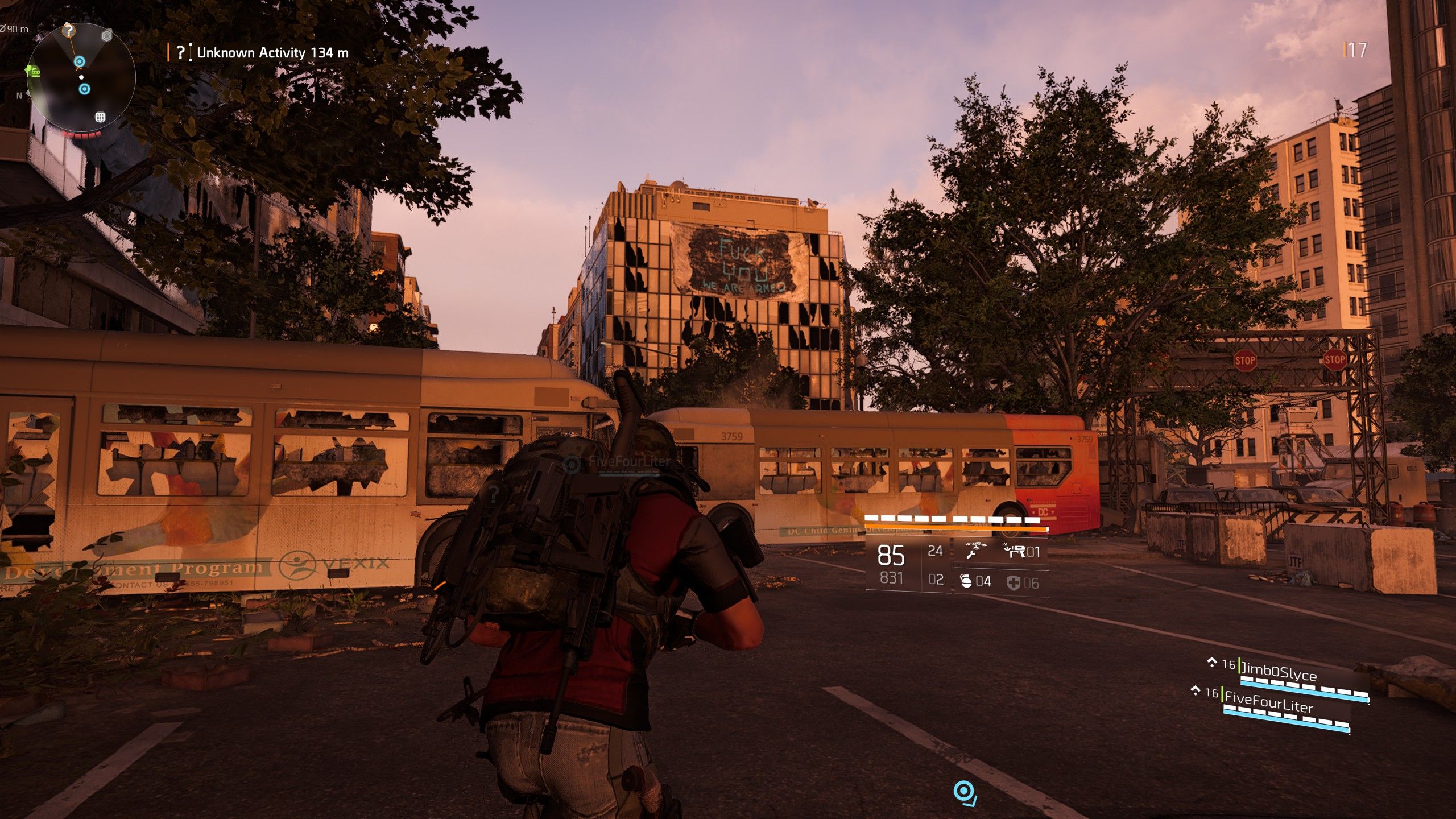
Of course, The Division 2 is best played with others, and the ability to matchmake into groups at any safe house or at the beginning of main missions also returns. One slight regression is that matchmaking for main missions just doesn’t seem to work as reliably as in the first game; a few times it just matched me with groups who were near the main mission, but not actually playing it (or seemingly planning on it). If you want to play with friends who are a significantly different level from yourself, the game will scale the damage output of lower level players up to that of the highest level player, but seemingly not armor values, meaning the lower level players will be extremely fragile against the higher level enemies.
If you want a break from fighting the AI, the PvP modes have also been expanded from the first game. The Dark Zone returns, now broken up into three sectors. In two of the sectors, all players stats are normalized to put everyone on even footing, while a third sector behaves closer to the DZ in the original game, with your character’s stats remaining intact. You will clear out landmarks populated with tough enemies, which drop high quality weapons. Though you will now find weapons that are not contaminated and can be used right away in the DZ, the best gear must still be extracted, which will notify all players on the map. There are more incentives now to go rogue, and you unlock Dark Zone perks as you increase your level, some of which are focused on PvP and going rogue. You can also now go rogue without being seen by others on the map, but killing too many players will cause you to become disavowed, which will make you show up for others on the map. I had a decent time during my forays into the DZ, encountering a good mix of friendly and hostile players, though it would benefit from further activities beyond simply clearing landmarks and the occasional supply drop.
The purely PvP focused Conflict matches on the other hand I struggled to enjoy. Despite normalized stats, some weapons and loadouts seem drastically more effective than others in the 4v4 matches. The small maps can result in spawn camping and the game’s mechanics in general are just not well suited to the modes available, which are currently skirmish (effectively team deathmatch) and domination. Though you might find it useful to get a sense of the PvP without going into the Dark Zone, this is one new addition that feels like a bit of a misfire.
Back in the main PvE part of the game, once you clear all of the main missions, you will be tasked with taking on three final Strongholds, each one occupied by one of the three factions you encounter during the story. Once you reach level 30 and clear the final stronghold, you will gain access to the ‘end game’, which is significantly more robust than what the first game offered at launch. A new faction, The Black Tusk appear and take over most of the map, including control points and regions you previously liberated. The Black Tusk are the toughest and most advanced of the factions and you will definitely want to team up with other players to take them on.
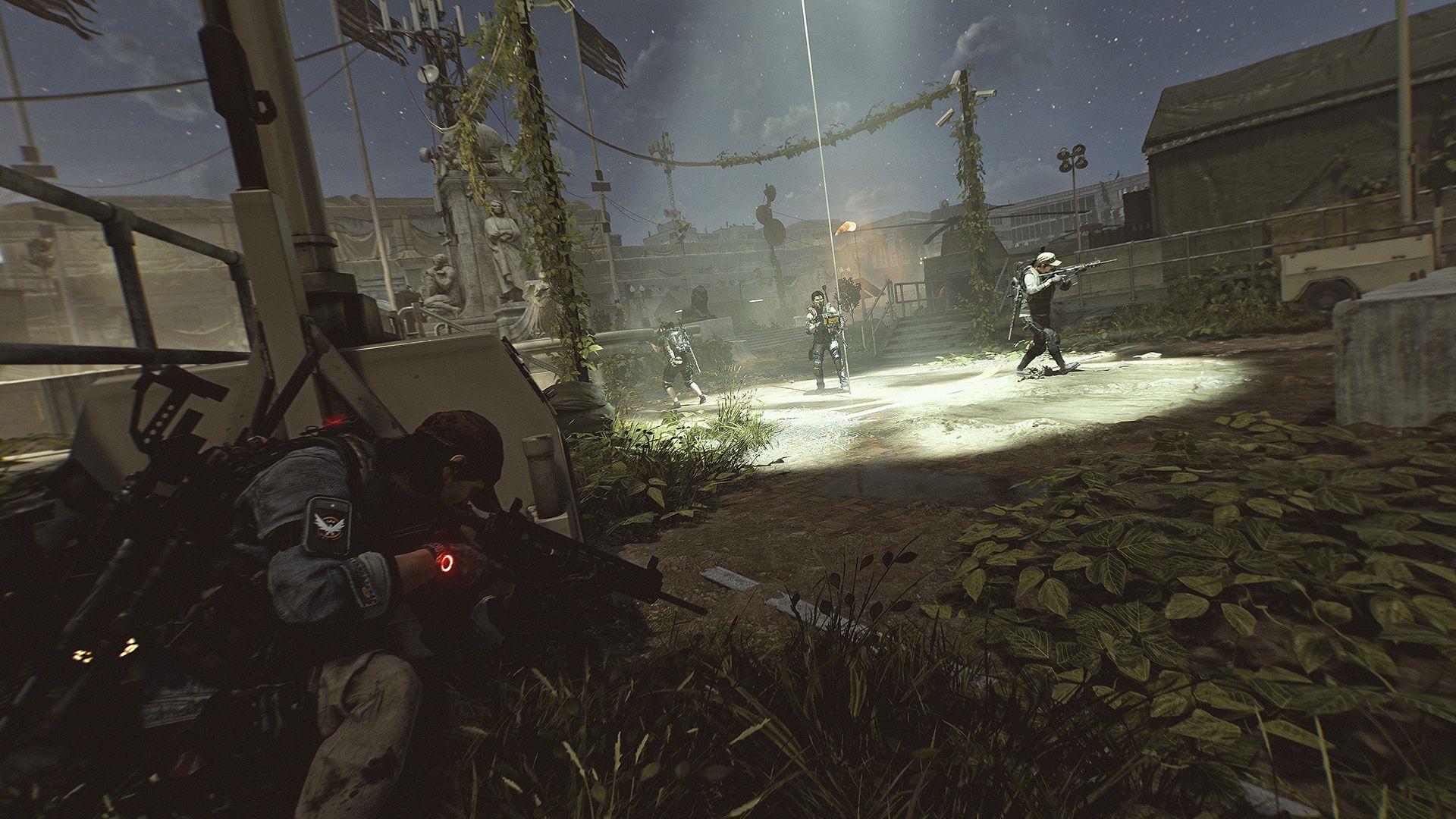
Perhaps more importantly, reaching this point in The Division 2 lets you gain access to specializations. These give you access to one of 3 special weapons, such as a grenade launcher or high-powered sniper rifle, as well as a new skill tree that contains everything from new skill variations like an artillery-turret, to new weapons, to stat bonuses. You can switch between the available specializations at any time, which adds even more depth to the character building and customization. At this point, the gear score that was added to the first Division after launch becomes available, with each piece of equipment having a number attached to it that indicates its overall quality. You might find yourself taking less preferable gear due to its higher score, but you still get such a steady stream of items these woes are only ever temporary.
In the end game, progression is just as satisfying as during the story, as you work to increase your overall gear score and through the specialization skill trees. You can unlock new world tiers by re-playing the main missions and strongholds, but this time they are populated with Black Tusk forces who make things much more challenging. Beating these will unlock a series of new world tiers that bring tougher enemies and better quality loot. Though there is currently no ultimate goal to work towards once you get to the highest world tier, eight-player raids and another stronghold are supposedly on the way as free updates, and the gameplay remains so enjoyable that you will probably end up going through the current end-game content just for the fun of it. As it stands, and not including time you might spend in conflict matches or Dark Zones, you could easily spend 40-50+ hours to finish the story and get to the highest world tier.
One somewhat unfortunate area where The Division 2 doesn’t stack up favorably to its predecessor is polish. Though I was impressed during my early hours at how everything seemed to be working as intended, the further I got into the game, the more bugs I seemed to encounter. Many of them were minor; physics objects floating in the air, enemies stuck in T-poses after getting killed, or animation bugs with enemies vaulting over cover. Audio glitches might cause gunfire from enemies and squad-mates to sound overly muffled. More impactful were times I got stuck on the terrain, or accidentally rolled through a wall and ended up stuck in a structure with no way out, forcing a reset.
Fortunately, the high bar that the original game set for its audio-visual presentation has been exceeded, as the sequel is one of the best looking games on the market if you have a powerful enough PC. Given the size of the world and lack of load screens, the quality of lighting and object detail is extremely impressive. The intensity of firefights is heightened by objects that will explode or go flying when hit by bullets, and you will likely notice smaller details like piles of garbage that deform and shift slightly when you stand on them. Considering the high level of visual fidelity, performance seems to be quite good, though some vegetation heavy areas did cause the framerate to dip. When the audio works properly, the sound design does seem improved over the original game, with weapon fire being a bit more detailed, and thunder-storms that sound intimidating when they roll in, drastically reducing visibility and audio awareness. The sound track remains low key during exploration, but the mix of industrial metal and electronic music used during combat is excellent and further heightens the firefights.
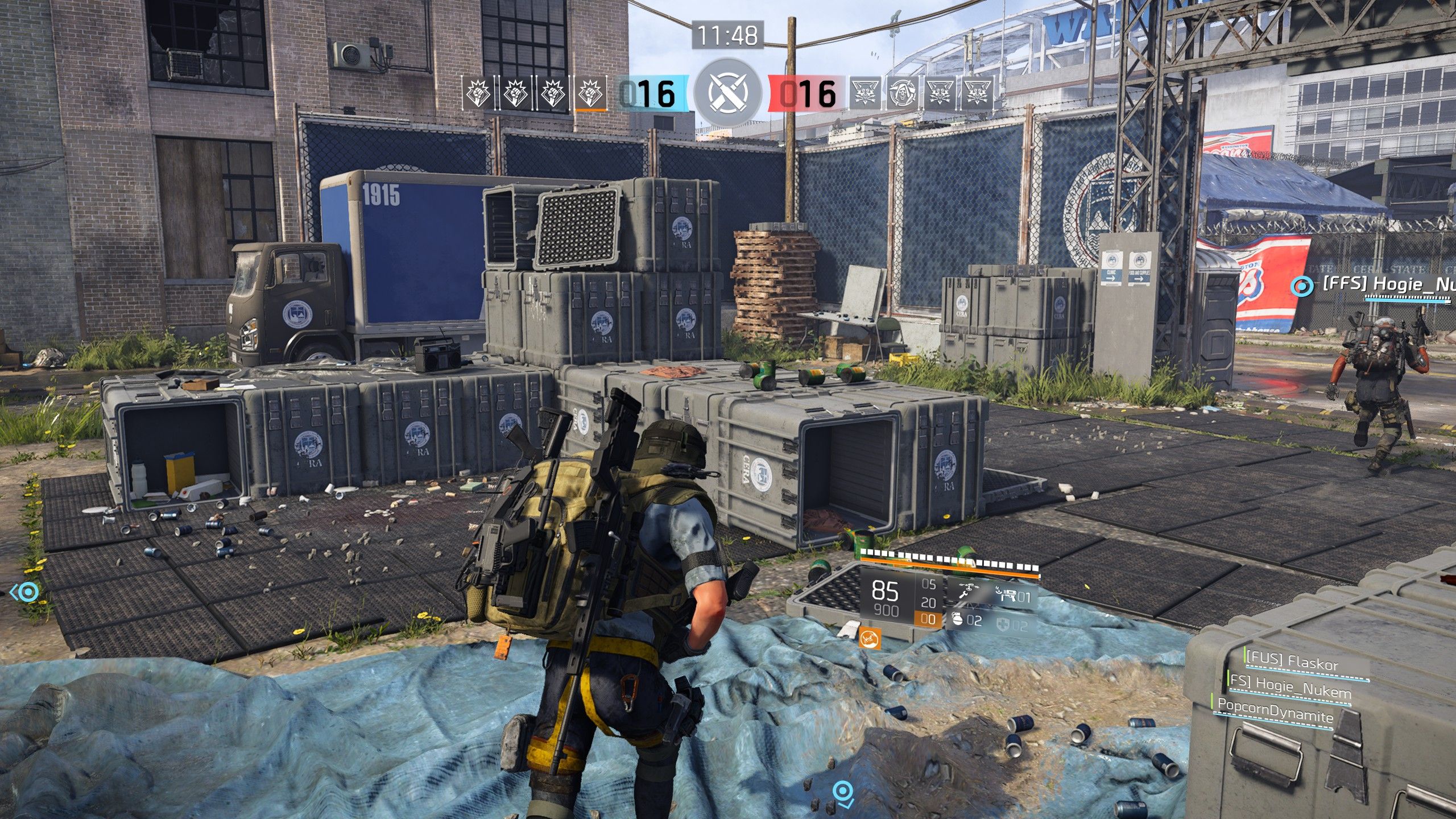
Despite the already excessive length of this review, there are still more features I haven’t even touched on, such as bounties, clans, and the robust crafting system that return from the original game, with a number of welcome tweaks based on fan feedback. Suffice it to say that The Division 2 is a feature-rich game with a ton of different things to do. Though most of these things do involve running to a location and shooting people, or fiddling around in menus to perfect your loadout, underpinning everything is some rock solid cover-shooter gameplay, robust and addicting progression, and a really well-crafted and often atmospheric open world. It is a shame that interesting narrative context can’t really be added to that list, but even with its weak storytelling and occasional lack of polish, the game feels content rich and already has a lot to offer. If you can get past the once again slightly jarring mix of realism and RPG elements, The Division 2 should offer dozens of hours of consistently enjoyable gameplay in another remarkable open world.
 Comments
Comments

















